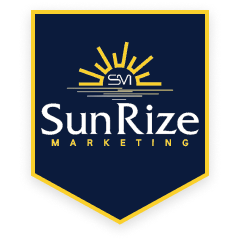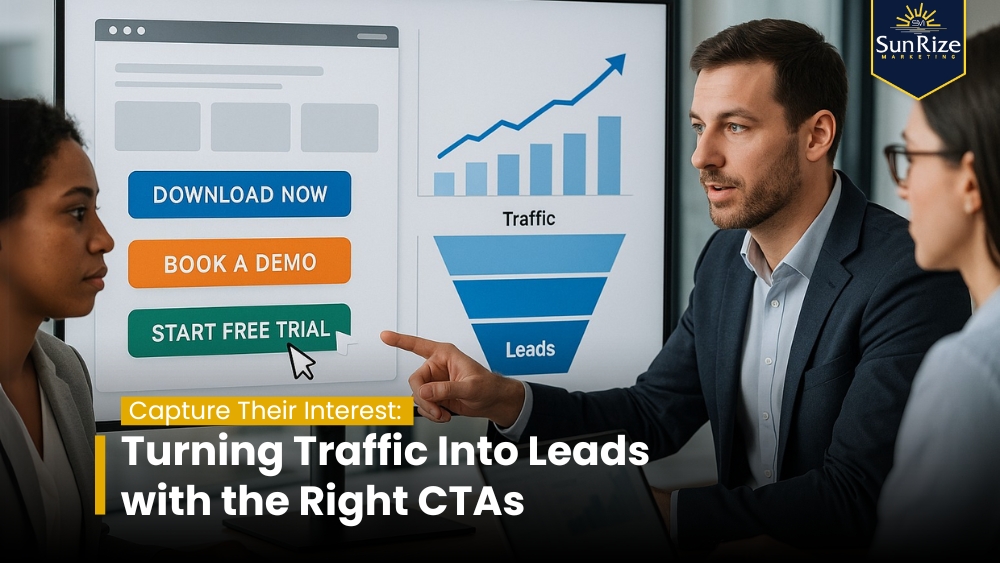Blog Series: The Legal Marketing Journey – Turning Web Visitors Into Paying Clients
In our previous discussion on the importance of first impressions, we emphasized how a well-designed website can establish trust and credibility.
A visually appealing, easy-to-navigate website builds credibility, while outdated or confusing design often causes visitors to bounce.
Now, let’s move beyond first impressions and focus on the next critical opportunity to engage potential clients: the Call to Action (CTA). This seemingly small element can play an outsized role in helping – or hurting – your conversion rates.
The Significance of CTAs in Legal Marketing
A Call to Action (CTA) is more than just a clickable button or hyperlinked phrase. It’s a carefully crafted message that directs your website visitor to take a specific, measurable next step. This could include scheduling a consultation, downloading a legal checklist, signing up for updates, or simply contacting your firm.
In legal marketing, where prospective clients are often under stress and seeking reassurance, a clear CTA provides a path forward. Without it, even interested visitors may leave your site unsure of what to do next.
According to the State Bar of Michigan, effective CTAs should be short, simple, and action-oriented, appearing on each page of your website to inspire visitors to take the next step.
Common Pitfalls in Law Firm CTAs
Despite their importance, CTAs are often overlooked or misused. Many law firm websites unintentionally discourage engagement due to poor CTA implementation. Common mistakes include:
- Generic Language
Phrases like “Click Here” or “Submit” don’t inspire confidence or convey value. In a competitive industry like law, vague prompts do little to motivate action. Your CTAs should clearly explain the benefit of clicking. - Poor Placement
A CTA hidden at the bottom of a long page, buried in dense text, or placed below the fold on mobile can easily be missed. Strategic placement matters—especially when attention spans are short. - Lack of Urgency
If your messaging doesn’t create a sense of time sensitivity or importance, users may delay taking action—then forget altogether. Adding urgency (“limited availability” or “get help now”) can drive more immediate engagement. - Too Many Options
Giving users too many CTAs on a single page can result in decision fatigue. If a visitor is asked to schedule a consultation, download a guide, and call the office all in one screen, they’re more likely to do nothing.
Avoiding these missteps can significantly boost user engagement and reduce the drop-off rate on key pages.
Best Practices for Crafting Effective CTAs
To increase conversions, your CTAs must do more than exist—they must be intentional, persuasive, and easy to interact with. Here’s how to make them work:
- Clarity and Specificity: Your CTA should answer the visitor’s unspoken question: “What do I get out of this?” Instead of generic text, use direct, benefit-oriented language like “Schedule Your Free Consultation Today” or “Download Your Estate Planning Starter Kit.”
- Prominent Placement: Visibility drives clicks. Your CTA should be easily scannable, placed in high-traffic areas such as the top of landing pages, sidebars, or right after a compelling paragraph. On mobile devices, it should remain sticky or repeated where relevant.
- Consistency: Keep your CTA styling—color, shape, font, and tone—consistent throughout the site. This reinforces your brand and creates a cohesive user experience.
- Mobile Optimization: Design CTAs that are easily clickable and visible on mobile devices, considering that a significant portion of users access websites via smartphones. According to Think with Google, more than 60% of users are likely to contact a business directly from mobile search results, so every CTA needs to perform well on small screens.
Examples of High-Converting CTAs for Law Firms
Well-crafted CTAs should speak directly to client concerns, offer real value, and make taking action easy. Here are some law-firm-friendly examples:
- “Schedule Your Free Consultation Today”
A classic CTA that removes financial hesitation and encourages first contact. - “Download Our Free Estate Planning Checklist”
Lead magnets like checklists or guides provide helpful information and capture contact info in return. - “Get Legal Advice Now – Contact Us”
Direct, urgent, and well-suited for time-sensitive practice areas like criminal defense or personal injury. - “Subscribe to Our Legal Insights Newsletter”
This soft CTA is a great top-of-funnel option to engage visitors not yet ready to call but open to ongoing value.
These examples are not one-size-fits-all. Match your CTAs to your practice area, target client persona, and page intent.
Testing and Analyzing CTA Performance
Your CTA strategy should evolve over time. What worked last year—or even last month—might not perform today. That’s why regular testing and analysis is key.
Metrics to track include:
- Click-Through Rate (CTR)
How often people click on your CTA vs. how many view it. - Conversion Rate
Of those who click, how many complete the desired action (e.g., schedule a consult)? - Bounce Rate
Are people visiting the page and leaving without clicking anything? That may point to unclear or unconvincing CTA placement.
You can also run A/B tests to compare different versions of your CTA—changing the text, color, placement, or offer. Tools like Google Optimize, HubSpot, or simple heatmaps can offer rich insights into user behavior.
According to BlissDrive, even small CTA tweaks can produce a 10% to 30% lift in conversions—a big difference over time for growing firms.
Integrating CTAs into the Client Journey
The most effective CTAs are not static. They guide users step by step through a journey – from awareness to conversion. Tailoring CTAs to the visitor’s stage of awareness helps you deliver the right message at the right time:
- Awareness Stage:
Use educational CTAs like “Download Our Legal Guide” or “Explore Common Estate Planning Questions.” - Consideration Stage:
Offer comparison tools, case studies, or interactive content – followed by “Schedule Your Free Consultation.” - Decision Stage:
Use action-driven CTAs like “Book Your Appointment Now” or “Call Our Office Today.”
Mapping CTAs to this buyer journey ensures you’re not overwhelming early-stage visitors—or under-delivering when prospects are ready to act.
Conclusion
Effective CTAs are pivotal in transforming website visitors into paying clients. By crafting clear, compelling, and strategically placed CTAs, your law firm can significantly enhance user engagement and conversion rates.


